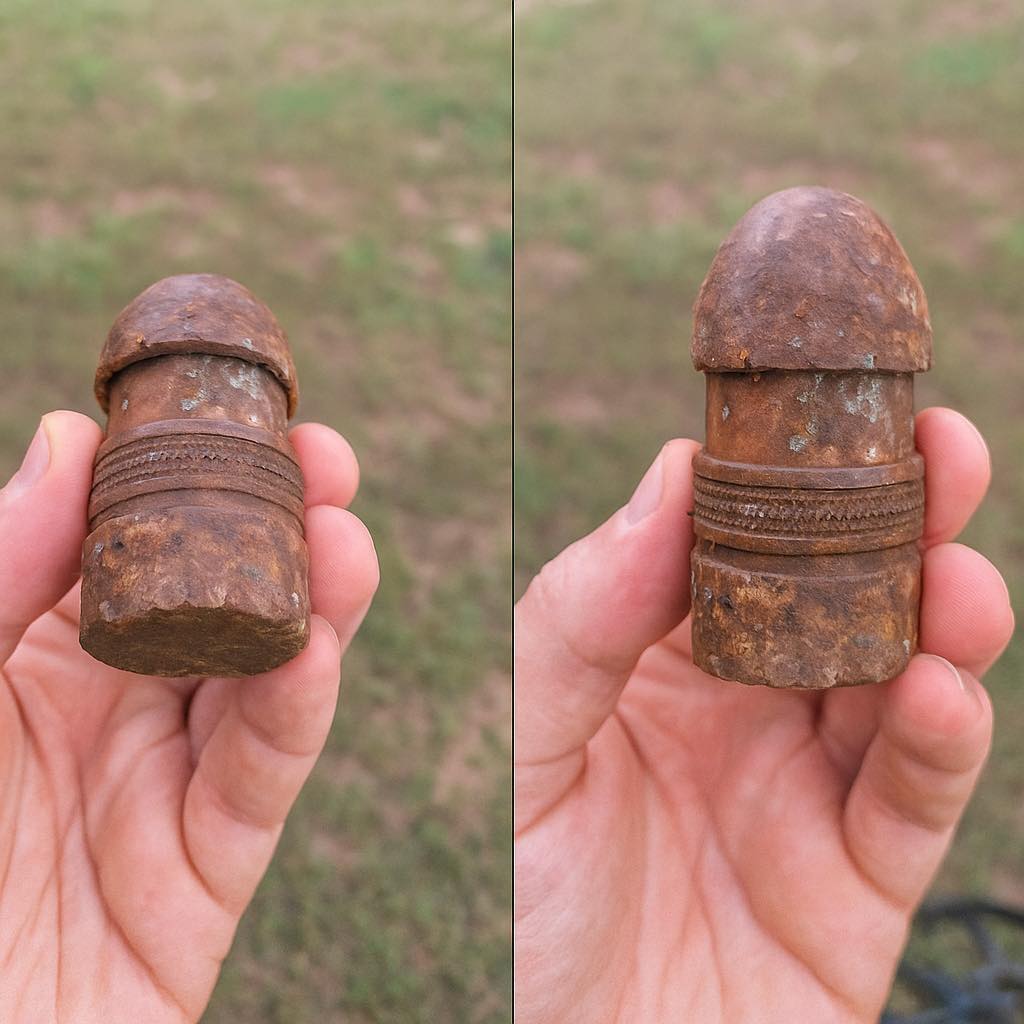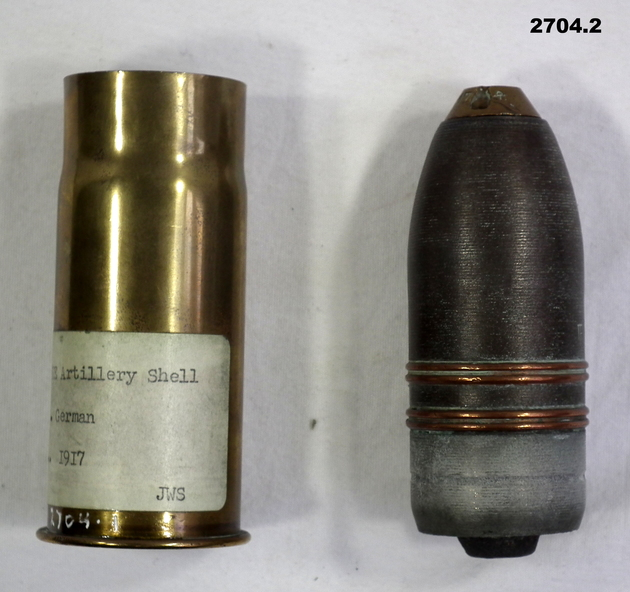A Small Relic with a Timeless Echo: The Story Behind a Forgotten Artillery Projectile
The Past Hidden in the Palm of Your Hand
Every now and then, history decides to whisper through metal instead of words. You hold something small—cold, rusted, and silent—but its story could fill books. This seemingly simple, cylindrical object is far more than a chunk of metal. It’s an artillery shell projectile, likely dating back to World War I or World War II, a remnant of a time when the world thundered with cannons and courage. Once fired, feared, and forgotten, it has resurfaced decades later to remind us how even the smallest artifact can carry echoes of human struggle and endurance.

Identifying the Artifact — The Shape That Speaks of War
At first glance, this object may look like a relic without context. But every mark, curve, and groove tells a story. Here’s how experts identify such a piece:
- The Rounded Tip: The projectile’s domed, metallic head was designed to pierce armor or target structures. It’s thick, solid, and heavy—built to survive incredible pressure at the moment of firing.
- The Copper Driving Bands: Around the midsection, you’ll notice several circular bands. These are driving bands, made of copper or bronze, crucial for gripping the rifling inside the gun barrel. When fired, these bands spin the projectile, giving it the stability needed for long-distance accuracy.
- The Flat Base: The bottom of the shell is where the fuze or explosive charge would once have been attached. In small-caliber shells like this, the propellant casing was separate, meaning this piece was just the projectile—the part that left the barrel at high speed.
From its size and design, it likely belonged to a 37mm or 40mm shell, the kind used in small field artillery, early tank guns, or anti-aircraft weapons.
How Big Wars Used Small Shells
While the massive cannons of both world wars often steal the spotlight, smaller artillery pieces were just as important. The 37mm and 40mm projectiles were the workhorses of close support and rapid-fire combat. They were used in anti-tank weapons, light cannons mounted on vehicles, and even shipboard anti-aircraft guns.
Imagine soldiers crouched behind muddy barricades, field gunners loading one of these small shells into the breach of a cannon, aiming not for destruction on a massive scale—but for survival, for seconds of advantage in chaos. These little shells were the heartbeat of battlefields where precision mattered more than brute force.
Video : Unidentified World War II projectile
The Journey Through Time — From Fire to Silence
This particular piece probably endured everything from shockwaves to silence. Fired or unfired, it found its way into the soil, forgotten for decades. Over time, moisture and oxygen transformed its gleaming metal into the rusted brown we see today. Each pit, groove, and layer of oxidation marks not just decay—but endurance.
Maybe it was part of a training exercise. Maybe it was left behind after an advance or retreat. Or maybe it was never fired at all—just dropped, discarded, and buried by time. Whatever the case, it survived when so much else didn’t.
Artifacts Like This Are More Than Metal — They’re Memory
Finding something like this is more than discovery—it’s connection. These shells were handled by human hands, packed in crates, transported across oceans, and fired from weapons that decided the fate of nations. When you hold it now, you hold not a weapon, but a witness.
It’s easy to forget that each piece of war technology came from minds full of both fear and ingenuity. Engineers designed it for precision, soldiers trusted it in battle, and now historians and collectors view it as a window into the past.
Safety Before Sentiment — Why Caution Matters
Before you think of keeping or cleaning such an item, remember one vital truth: unexploded ordnance can still be dangerous. Even small projectiles like this might contain residual explosives or detonators that remain unstable after decades.
If you find an object like this:
- Do not try to open, clean, or dismantle it.
- Mark the spot and move away carefully.
- Notify local authorities or an explosive ordnance disposal (EOD) team.

In most cases, professionals can determine whether it’s inert (harmless) or live (potentially dangerous). Once declared safe, such relics can be legally preserved or displayed as historical artifacts.
The Historical Value of a Rusted Relic
Collectors and museums often treasure small finds like this because they represent everyday history. While tanks and aircraft tell grand stories, small-caliber shells tell personal ones—of the gunners who fired them, the mechanics who maintained them, and the unseen rhythm of war.
A piece like this, properly documented and preserved, offers insight into:
- Military technology evolution between 1914–1945
- Engineering craftsmanship under wartime conditions
- Cultural history, showing how even utilitarian objects become relics of remembrance
When cleaned professionally and stabilized, such shells are displayed in museums or private collections, symbolizing both innovation and the cost of conflict.
Rediscovering Forgotten Stories
Think about it: this little piece of metal traveled through time—across generations, landscapes, and emotions—to end up in your hand. It’s a survivor, a fragment of something far greater, and perhaps a silent tribute to those who lived through the wars it once served.
What makes it powerful isn’t its military purpose, but its transformation. Once a tool of destruction, now it’s a vessel of remembrance. Each scratch and dent is like a word in a forgotten diary, written not with ink but with impact and endurance.
Video : World War I artillery shell case
Conclusion — The Echo of a Bygone Battle
A small artillery projectile like this might weigh only a few ounces, but it carries a story heavier than iron. It reminds us how technology, tragedy, and time weave together into the objects we now call relics.
So if you ever come across something similar, pause for a moment. Feel its weight. Think of the history it carries—the hands that made it, the fields it crossed, and the silence that followed. It’s proof that even in rust and ruin, memory survives.
The past doesn’t always speak loudly. Sometimes, it sits quietly in the palm of your hand, waiting for someone—like you—to listen.





